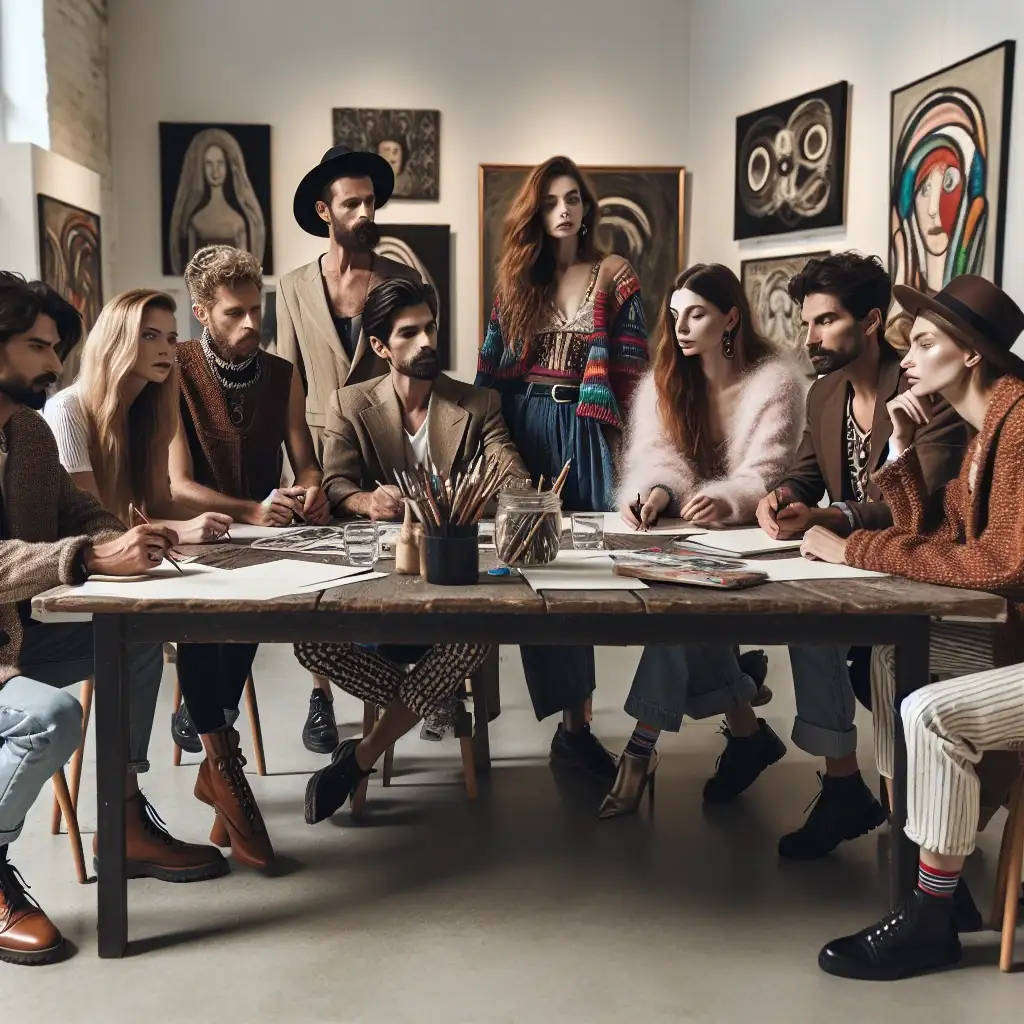Key Points
- Within the dynamic art scene, artists are shifting towards branding, raising questions on strategic benefits and artistic integrity.
- By embracing branding, artists can access new revenue sources, maintain creative control, and leave a lasting imprint.
- The fusion of art and branding reflects the digital era's influence, empowering artists to thrive in a rapidly evolving cultural environment.
Did you know that in 2020, amidst the chaos, the global art market was valued at over $50 billion? Yes, that’s billion with a ‘B’. In this ever-evolving landscape, artists are no longer just creators; they are becoming brands. But here’s the burning question: Is this trend of artists turning into brands a sellout move or a smart strategy?
Let’s dive deep into this phenomenon, stripping away the layers of paint and pretense to uncover the raw truth. By the end of this exploration, you’ll understand why branding might just be the masterstroke artists can use in their strategy to not only survive but thrive in the modern world.
Historically, artists were often dependent on patronage and commissions. Fast forward to the 21st century, and the scene has dramatically changed. The rise of social media and digital platforms has revolutionized how artists connect with their audience, sell their work, and, yes, brand themselves.
Think about it. When an artist becomes a brand, they’re no longer a hidden talent waiting to be discovered in a dusty studio. They are out there, in the glaring light of day, commanding attention, and shaping perceptions. This is not just visibility; it’s a form of empowerment.
So, is it selling out? Traditionalists might sneer at the thought of art as a commodity. Yet, here’s a provocative thought: hasn’t art always been a commodity at some level? What changes is not the essence of art but how it’s presented and marketed. Branding doesn’t dilute the artistic quality; if anything, it amplifies the artist’s voice, enabling them to reach audiences far and wide.
Moreover, being a brand can open up new revenue streams. Merchandise, collaborations, endorsements – these are not selling out; they’re savvy business moves. They allow the artist to sustain themselves, invest in their craft, and, crucially, maintain creative freedom. After all, financial stability can provide a stable foundation for creativity to flourish without the constant worry of making ends meet.
Let’s also talk about longevity. Art trends come and go, but brands endure. By building a brand, artists can create a lasting legacy that transcends their individual works. It’s about building a story, an identity, that resonates with people on a deeper level. This connection can turn casual viewers into loyal fans and collectors, ensuring the artist’s relevance over the years.
Consider the backlash against selling out. It often comes from a place of purity; the idea that art should be for art’s sake. But let’s get real. We live in a world where visibility is currency. By mastering branding, artists can control their narrative, ensuring that their work is seen, appreciated, and understood on their terms. Isn’t there purity in that autonomy?
Yet, caution is necessary. In the quest to become a brand, there’s a risk of losing authenticity. The balance is delicate. Artists must navigate the tightrope between market demands and their artistic integrity. The magic happens when artists can infuse their brand with their uniqueness, without compromising on what makes their art truly theirs.
So, where do we draw the line? It’s not about drawing lines but rather about expanding horizons. The art world is notoriously exclusive, but branding democratizes art. It breaks down barriers, making art accessible to a broader audience. This inclusion can foster a richer, more diverse art landscape.
Critics might argue that this demeans the value of art, reducing it to mere marketing. However, consider this: branding, at its core, is about storytelling. Isn’t that what art is all about? Telling stories, invoking emotions, sparking conversations? When done right, branding doesn’t cheapen art; it elevates it, giving it a platform to speak louder and reach further than ever before.
In the end, artists as brands isn’t just a trend; it’s a reflection of the changing times. The digital age has transformed how we consume art, and artists are adapting. It’s a smart strategy, rooted in the reality of our interconnected world. By embracing branding, artists can secure their spot in this new reality, ensuring their art not only survives but thrives.
So, is becoming a brand selling out? Far from it. It’s about artists taking control of their careers, their creative vision, and their financial futures. It’s a bold move, requiring courage, creativity, and a dash of business savvy. But for those who navigate it wisely, the rewards can be immense: financial security, creative freedom, and a lasting legacy.
As we wrap up this exploration, remember: at the heart of every artist-as-brand is still the artist — the creator, the visionary, the rebel. Branding is merely a tool, and like any tool, its impact depends on how it’s used. Used wisely, it can be a force for good, propelling artists to new heights and bringing art to the masses.
The art world is changing, but so are the artists. They are no longer just creators; they are innovators, entrepreneurs, and yes, brands. This isn’t a sellout; it’s evolution. And in this dynamic landscape, branding is not just smart; it’s essential. So, here’s to the artists—the brand builders of tomorrow. May they paint the future in their bold strokes, unapologetically and brilliantly.

